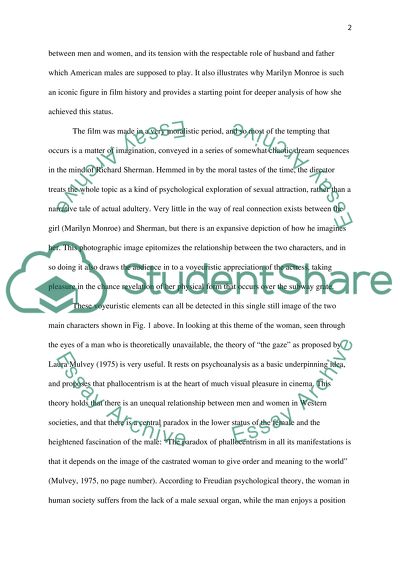Cite this document
(“The theory of psychoanalysis and the gaze in cinema: Marilyn Monroe's Essay”, n.d.)
The theory of psychoanalysis and the gaze in cinema: Marilyn Monroe's Essay. Retrieved from https://studentshare.org/psychology/1465643-the-theory-of-psychoanalysis-and-the-gaze-in-cinema-marilyn-monroes-example
The theory of psychoanalysis and the gaze in cinema: Marilyn Monroe's Essay. Retrieved from https://studentshare.org/psychology/1465643-the-theory-of-psychoanalysis-and-the-gaze-in-cinema-marilyn-monroes-example
(The Theory of Psychoanalysis and the Gaze in Cinema: Marilyn Monroe'S Essay)
The Theory of Psychoanalysis and the Gaze in Cinema: Marilyn Monroe'S Essay. https://studentshare.org/psychology/1465643-the-theory-of-psychoanalysis-and-the-gaze-in-cinema-marilyn-monroes-example.
The Theory of Psychoanalysis and the Gaze in Cinema: Marilyn Monroe'S Essay. https://studentshare.org/psychology/1465643-the-theory-of-psychoanalysis-and-the-gaze-in-cinema-marilyn-monroes-example.
“The Theory of Psychoanalysis and the Gaze in Cinema: Marilyn Monroe'S Essay”, n.d. https://studentshare.org/psychology/1465643-the-theory-of-psychoanalysis-and-the-gaze-in-cinema-marilyn-monroes-example.


